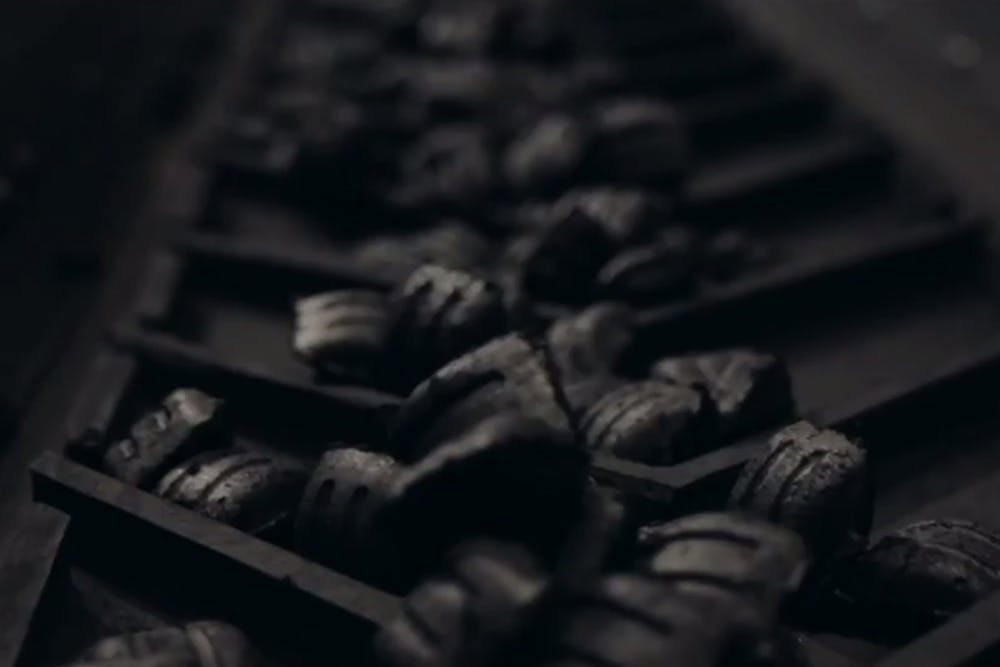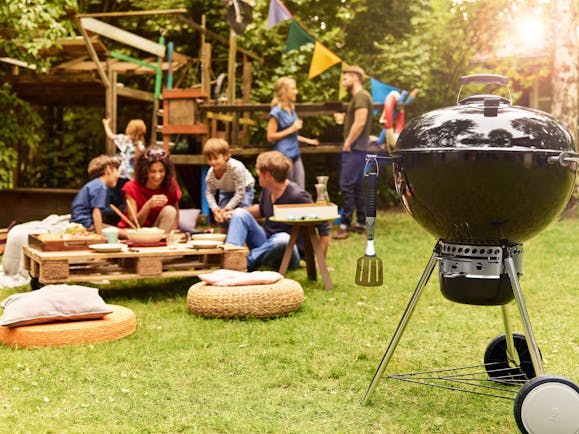Become the master of the embers! In this article, we’ll show you all aspects of regulating the heat on your charcoal barbecue including fuel types, required temperatures, and direct and indirect barbecue cooking.
How to control the temperature of your charcoal barbecue
- What's the Best Fuel for a Barbecue?
- What’s the easiest way to light a charcoal barbecue
- Tips for pre-heating and maintaining temperature of a charcoal barbecue
- How to manage the temperature of your charcoal barbecue for different foods
- What's the difference between direct and indirect barbecue cooking methods?
What's the Best Fuel for a Barbecue?
High quality charcoal barbecue coals are the best way to ensure your food is cooked perfectly. For getting things started, you can’t beat our charcoal briquettes. Ready to use within 20 minutes, they offer a high heat and even burn through that can be sustained for more than 3 hours. What’s more, you have our guarantee that nothing besides carbonised wood, starch and water is put into our briquettes, making them not only the quickest and most consistent burners but also some of the cleanest on the market.
To capture that distinctive, smoky aroma of charcoal barbecuing try our premium lumpwood. Made from beech, hornbeam, birch, apple and oak woods, these 100% natural hardwood coals are guaranteed to turn your garden into a forest of sweet, rich smells and impart a whole new level of flavour to your food.
In terms of cooking times, lumpwood lights fast and burns hotter, which can be great for searing or high-heat cooking, whereas briquettes burn longer and are therefore best suited to slower cooking methods.
The Barbecue Lid with Simon Rimmer
The Barbecue Lid with Simon Rimmer
What is the easiest way to light a charcoal barbecue?
Ignite your fuel quickly and easily with the Rapidfire Chimney Starter. The chimney’s simple yet efficient design uses a compact cylinder to maximise the amount of contact between the briquettes, while an open lower rack makes it easy to insert lighter cubes for fire starting.
Our chimneys can also be used to ensure you have the correct amount of fuel for what you are cooking, this depends on the temperature and cooking method needed. For low and slow cooking, fill a third of your chimney. For foods this require a longer cooking time using the indirect method use half a chimney of briquettes. For direct grilling at high heat, fill the chimney all the way.
RapidFire Lid Damper
RapidFire Lid Damper
Lighting is easy with the Rapidfire Chimney Starter:
- Measure out the correct amount of charcoal (as explained above) and pour into the Chimney Starter.
- Light three lighter cubes on the charcoal grate.
- Position the Chimney Starter over the cubes.
- Wait until flames appear at the top of the Chimney Starter. This is a sign that the coals are glowing.
- Shake the glowing coals into the grilling baskets (beware of sparks!) That’s it!
Tips for pre-heating and maintaining temperature of a charcoal barbecue

How long should a charcoal barbecue heat up for?
For best results, you need to get your barbecue to temperature before cooking. Heat up your barbecue for around 10-15 minutes with the lid on before putting anything on the cooking grates.
If your charcoal barbecue is not hot enough:
- Make sure your lid vents are open fully.
- Only use good-quality fuel.
- Use fresh charcoal – make sure it is not damp or too old.
- Make sure there is no remaining ash from your previous barbecue session.
If your charcoal barbecue is too hot:
- Make sure you aren’t using too much fuel.
- Check that there’s not too much air getting into the barbecue. If there is, close over the lid vent slightly to regulate the heat across the charcoal barbecue
How to manage the temperature of your charcoal barbecue for different foods
Depending upon the kind of Weber barbecue you have and the food you want to prepare, you will likely need to adapt your cooking methods to suit. The different cooking methods require different barbecue temperatures; the easiest way to have your barbecue at the right temperature is to use the correct amount of fuel which you can use the with the Rapidfire Chimney Starter to measure, as discussed above.
To achieve the perfect texture, moisture and taste, it’s essential to use the right cooking method and getting your food to the right core temperature. Consult our handy cooking methods table for optimum cooking conditions accounting for the cut of meat and its weight. You may need to regulate the temperature of your barbecue to maintain cooking conditions.
Cooking with the lid on ensures a controlled circulation of heat; it keeps the heat inside so the food requires less time to cook. This circulation allows for perfect convection-style barbecuing.
For the more experienced griller, you can also regulate heat on a charcoal barbecue by considering the amount of air circulating in the barbecue. The air vents control the amount of air let into your barbecue, which in turn controls the temperature: the more air entering the barbecue, the hotter it becomes. Most Weber barbecues have vents on both the lid and the bottom bowl.
If you are a beginner, leave both the top and bottom vents fully open. As you become more experienced, try permanently leaving the bottom vent fully open and using the lid vent to control the temperature.
Recommended damper settings according to temperature:
High heat | 230-290 °C | Fully open | Pizza, potatoes, rotisserie food |
Medium heat | 175-230 °C | ½ open | Poultry, vegetables, cakes |
Low heat | 120-175 °C | ¼ open | Sausages, smoked meat, fish |
Low and slow/smoke zone | 95-150 °C | ¼ - ⅛ open | Pulled pork, spare ribs, brisket |
Off | N/A | Fully closed | N/A |
What’s the difference between direct and indirect barbecue cooking methods?
Depending upon the kind of Weber barbecue you have and the food you want to prepare, you will likely need to adapt your cooking methods to suit. The different cooking methods require different barbecue temperatures; the easiest way to have your barbecue at the right temperature is to use the correct amount of fuel as discussed above.
Put simply, the direct cooking method is similar to broiling. It involves cooking food directly over the heat source and turning the food over half way through the cooking time. The lid vent should be open and your coals should be evenly distributed. This method is used for items that will take 20 minutes or less to barbecue, like steaks, burgers, chops, sausages and vegetables. It is also an excellent way to sear food and create that nice crisp, caramelised texture.
Indirect barbecue cooking, on the other hand, is similar to roasting and ideal for items that require a longer grilling time. With this indirect cooking method, the coals should be placed evenly on both sides, leaving a gap in the middle. Fill a drip pan with a bit of water and place it in the centre of the grill. Place the food directly over the drip pan. This method is ideal for larger items of food like roasts, bread and cakes. Lift the lid only after the suggested cooking time so that the air circulation remains constant.
Cooking Method Direct
Cooking Method Direct
Summary Take your knowledge of mastering the heat of your charcoal barbecue and embark on your next culinary adventure. Explore new recipes, ingredients and techniques, and impress your friends and family. |
Tags:
Related Posts

Charcoal Barbecuing
Top charcoal barbecue safety tips
